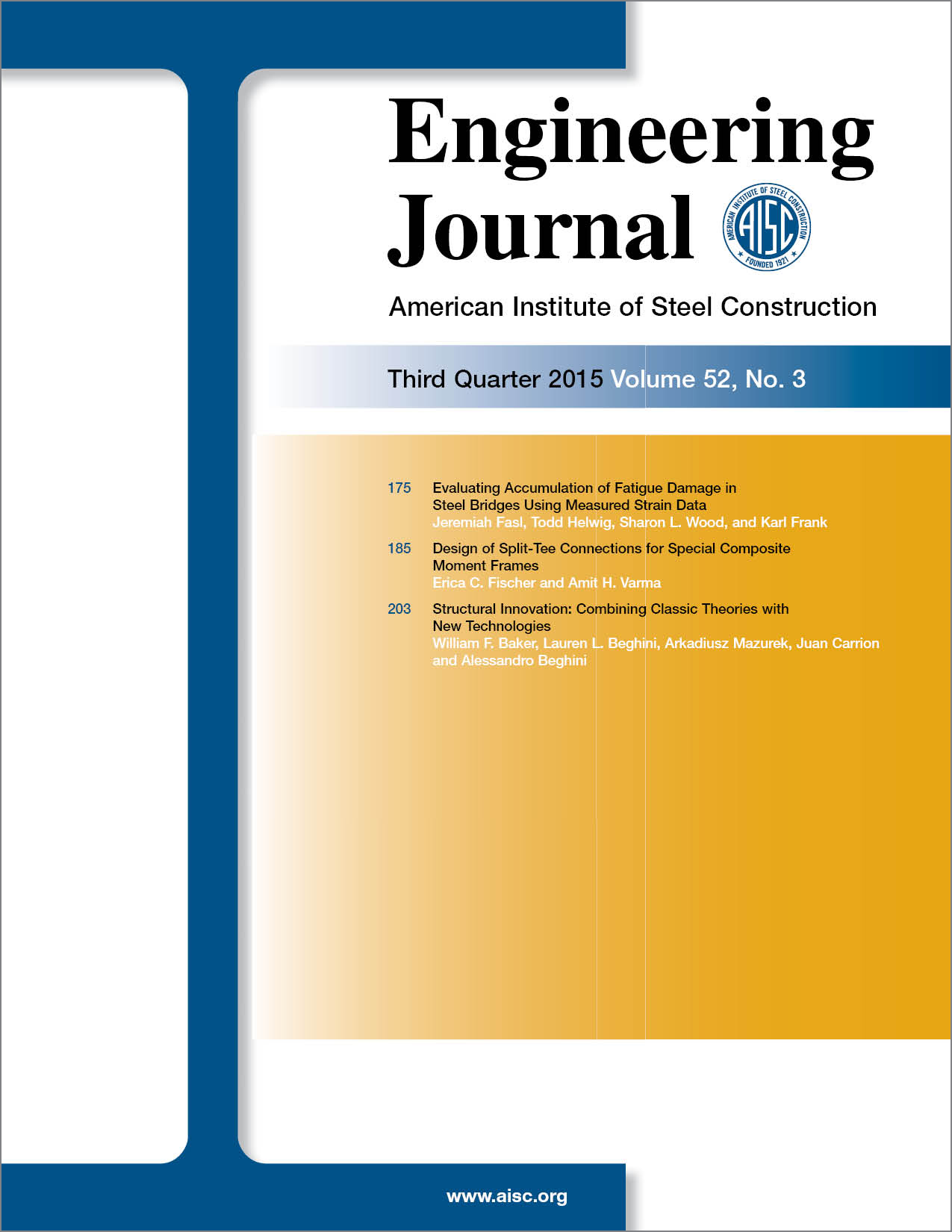Evaluating Accumulation of Fatigue Damage in Steel Bridges Using Measured Strain Data
DOI:
https://doi.org/10.62913/engj.v52i3.1086Keywords:
strain gages, fatigue measurement, steel bridgesAbstract
As traffic volumes increase, bridges age, and maintenance budgets are cut, transportation officials often need quantitative data to distinguish between bridges that can be kept safely in service and those that need to be replaced or retrofitted. Strain gages can be utilized to evaluate fatigue damage in steel bridges using the techniques that are discussed in this paper. To evaluate fatigue damage, the cycles induced by vehicular traffic must be quantified using a cycle-counting algorithm, such as a rainflow algorithm. The amount of fatigue damage induced during the monitoring period can then be calculated using the traditional method, the effective stress range, or using a new approach based on the index stress range. One distinct advantage of the proposed method is that the relative amount of fatigue damage accumulated at different locations along the bridge can be easily compared. The advantages and limitations of both methods are demonstrated using measured data from a fracture-critical steel bridge.

